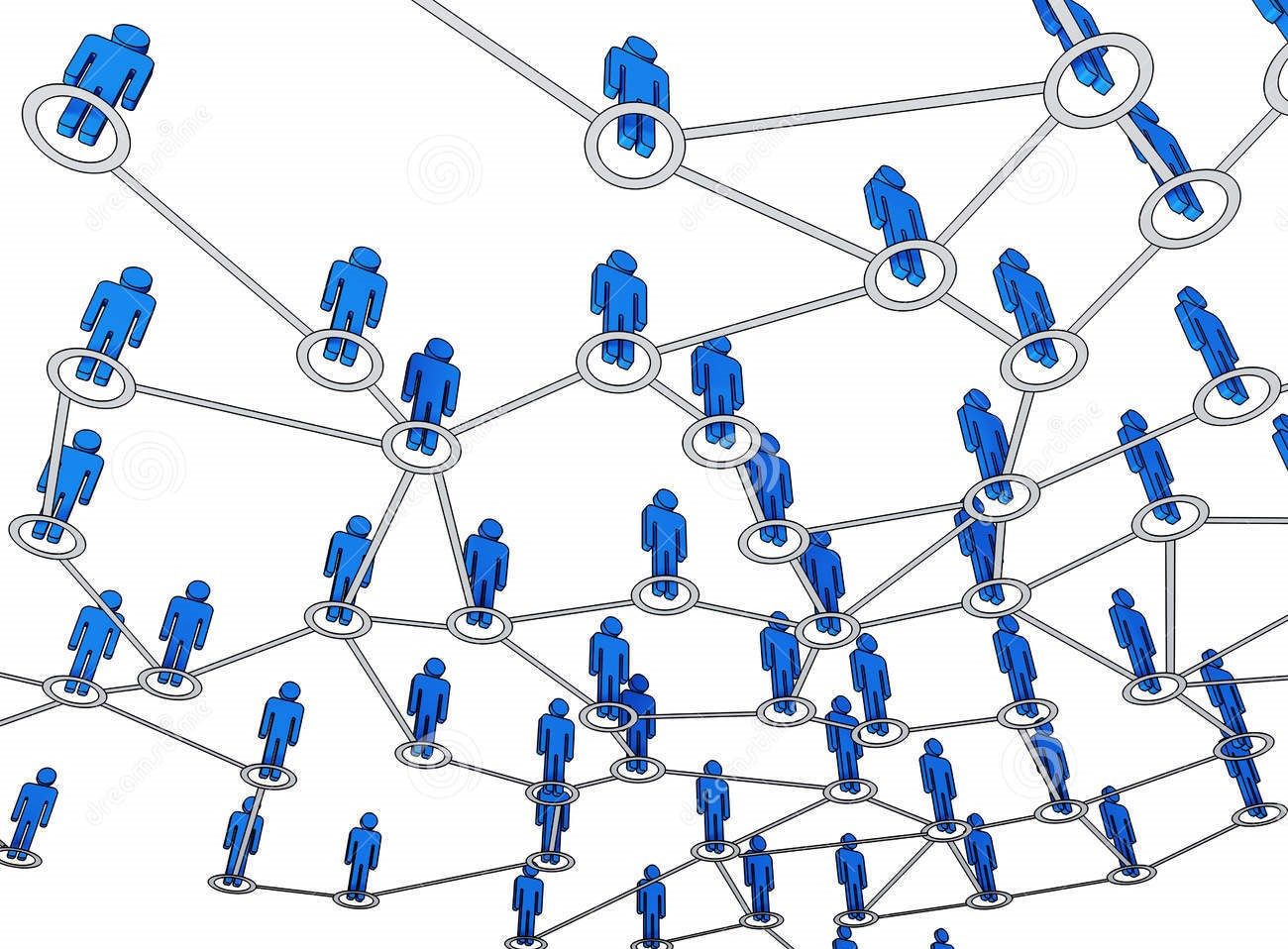A Note to Human Services Agencies: Think About What Type of Social Capital You Most Need to Build Online
As human service agencies help program participants take social capital activities online, it is important to be clear about the purpose for the social capital – what program-related purpose does it seek to serve?

Co-Authors: Maureen Berner, UNC SOG; Phillip Graham, RTI; Justin Landwehr, RTI; Brooklyn Mills, ncIMPACT
In the first installment of this blog series, A Note to Human Services Programs: You Can Still Build Social Connections in a Time of Social Isolation, we noted that social connections can be critical to program outcomes for many human service program participants. Even in a time of physical isolation, those connections may need to be maintained, built and leveraged.
As human service agencies help program participants take social capital activities online, it is important to be clear about the purpose for the social capital – what program-related purpose does it seek to serve? Researchers and policymakers commonly discuss the following three types of social capital:[i]
Bonding social capital refers to the relationships built among individuals with characteristics, experiences, or group membership in common (“people like me”). Do your program participants need to stay connected to those who are similarly situated to help each other to “get by?”
Bridging social capital refers to relationships built among individuals, communities, or groups with differing background characteristics or group membership (“people different from me”). Do your program participants need connections between social groups, social class, race, religion or other important sociodemographic or socioeconomic characteristics to help get ahead?
Linking social capital is an extension of bridging capital and it focuses on networks and organizations that provide connections across power dynamics, giving access to more resources (“individuals or institutions in positions of power”). Do your program participants need relationships with people or institutions in positions of power?
 Online platforms, such as Facebook, allow for the production and maintenance of both strong ties and weak ties and, by extension, can influence positively users’ life satisfaction, trust and public participation. Several research studies suggest that a person’s bridging and linking ties may increase more easily because the technology is suited to maintaining these links cheaply and without high barriers. Bonding ties, however, will likely be limited to maintaining or solidifying existing offline relationships as opposed to meeting new people who serve to help participants “get by” unless human service agencies are able to meet participants’ need for identifying with others and gaining a sense of belonging; finding a basis for conversation and social interaction; connecting with family, friends, and society; and gaining insight into the circumstances of others—all these reasons can foster norms of reciprocity and trust and result in bonding capital
Online platforms, such as Facebook, allow for the production and maintenance of both strong ties and weak ties and, by extension, can influence positively users’ life satisfaction, trust and public participation. Several research studies suggest that a person’s bridging and linking ties may increase more easily because the technology is suited to maintaining these links cheaply and without high barriers. Bonding ties, however, will likely be limited to maintaining or solidifying existing offline relationships as opposed to meeting new people who serve to help participants “get by” unless human service agencies are able to meet participants’ need for identifying with others and gaining a sense of belonging; finding a basis for conversation and social interaction; connecting with family, friends, and society; and gaining insight into the circumstances of others—all these reasons can foster norms of reciprocity and trust and result in bonding capital
Once you have determined what type of social capital you have been building for participants and why, you may be ready to implement the strategies identified in the next two installments of this blog series, A Note to Human Services Programs: Three Practices for Building Social Capital During COVID-19, and A Note to Human Services Programs: Three Practices for Building Social Connections in a Time of Social Isolation, to serve those clients who have access to the phone and virtual tools.
However, it is important to note that social capital works best when in a supportive environment. If you want to implement these practices, we recommend you do so within the context of the following underlying principles.
People at the Center
Person-centered programs view participants as experts, inviting them to drive the goals and services, and use staff as facilitators and supporters instead of directors. When participants are listened to and their interests and experiences drive the process, they may be more likely to feel cared for and respected. Trusting, reciprocal relationships may be more likely to develop among them and with program staff and volunteers.
Relationships as Assets
Programs that are successful in helping their participants leverage social capital often think of social capital as a critical asset. It has value, as important as the organization’s building or bank account. As such, program leaders seek to build, nurture, leverage, and monitor social capital that results in high levels of trust.
Staff and Participants as Partners
Programs that view participants as partners offer their participants agency to help shape and scope the program in ways that work for the participants. One way of doing this is to work to minimize any sense of an uneven power dynamic so that participants feel empowered to set their own goals and take the lead in developing a plan to achieve them.
Cultural Competence
Programs that reflect cultural competence promote “positive and effective interactions with diverse cultures” through “a set of attitudes, perspectives, behaviors, and policies.”[ii] This is often very challenging work for human services agencies, as staff and volunteers often have very different lived experiences and represent different cultures than program participants.
Emotional Intelligence
Emotional intelligence involves the capacity to effectively navigate emotions and use emotions to improve, rather than hinder, decision-making.[iii] It can lead to stronger bonds and trust (for example, by naming emotions or accurately recognizing others’ feelings) and may be a particularly important quality in the staff and volunteers of social capital-building programs by helping them navigate sensitive interactions.
Read the following blogs here, A Note to Human Service Programs: Three Practices for Building Social Capital During COVID-19, and A Note to Human Service Programs: Four More Practices for Building Social Capital During COVID-19, for particular practices you can implement during the COVID-19 pandemic with program participants who have internet access.
Listen to the Podcast
The COVID-19 pandemic is causing people around the world to question how this virus will affect the many public and private systems that we all use. Click here to hear more thoughts from a podcast about Social Capital from ncIMPACT’S director, Anita Brown-Graham, as part of a series of Viewpoints on Resilient & Equitable Responses to the Pandemic from UNC’s Center for Urban and Regional Studies.
The material for this blog series has been adapted from content based on: information gathered by engaging a panel of national experts for interviews and focus groups; conducting a national program scan of notable human services programs using social capital; visiting agencies in person, and writing in-depth case studies with selected programs, and augmented by research on virtual communities conducted by Anita Brown-Graham. The team responsible for that original content includes The Office of the Assistant Secretary to Planning and Evaluation at the United States Department of Health and Human Services, RTI International, and the ncIMPACT Initiative at the School of Government at UNC-Chapel Hill. All images are stock photos. This does not necessarily represent the views of the Department of Health and Human Services. Nothing in this blog series should be construed as endorsing any company or platform.
[i] Woolcock, M., & Narayan, D. (2000). Social Capital: Implications for Development Theory, Research, and Policy. The World Bank Research Observer 15(2) 225–249. https://doi.org/10.1093/wbro/15.2.225
[ii] U.S. Department of Health and Human Services, https://www.hhs.gov/ash/oah/resources-and-training/tpp-and-paf-resources/cultural-competence/index.htm –
[iii] Mayer, J. D., Roberts, R. D., & Barsade, S. G. (2008). Human abilities: Emotional intelligence. Annual. Rev. Psychol., 59, 507-536.

3 Responses to “A Note to Human Services Agencies: Think About What Type of Social Capital You Most Need to Build Online”
A Note to Human Service Programs: You Can Still Build Social Connections in a Time of Social Isolation - Facts that Matter
[…] the second installment in this series, A Note to Human Service Agencies: Think About What Type of Social Capital You Most Need to Build Onl…, we shared insights on different types of social capital and general principles that human service […]
A Note to Human Service Programs: Three Practices for Building Social Capital During COVID-19 - Facts that Matter
[…] in a Time of Social Isolation, we shared the definition of social capital. In the second, A Note to Human Service Agencies: Think About What Type of Social Capital You Most Need to Build Onl…, we shared insights on different types of social capital and general principles that human service […]
A Note to Human Service Programs: Four More Practices for Building Social Capital During COVID-19 - Facts that Matter
[…] that human service programs seeking to build social capital should consider. In the second, A Note to Human Service Agencies: Think About What Type of Social Capital You Most Need to Build Onl…, we shared insights on different types of social capital and general principles that human service […]